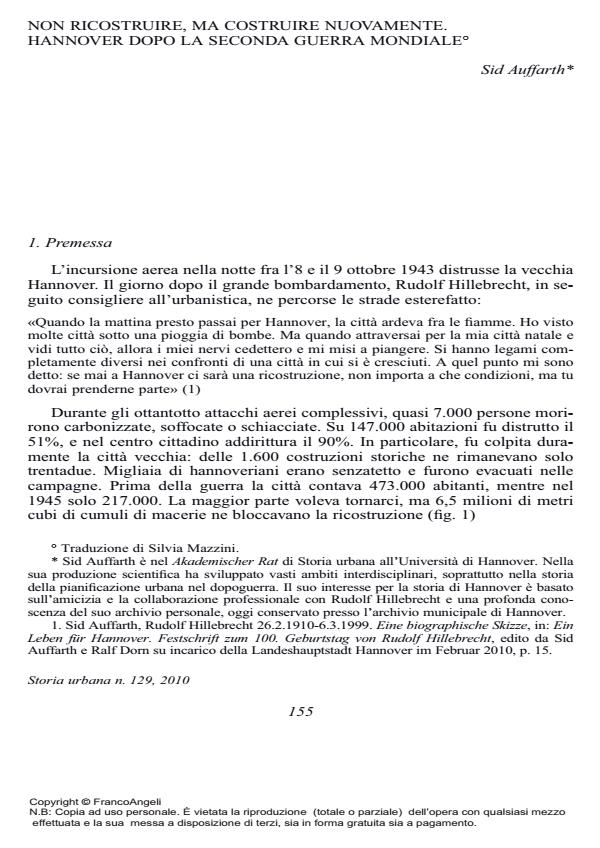Not rebuilding, but building afresh. Hannover after the second world war
Journal title STORIA URBANA
Author/s Sid Auffarth
Publishing Year 2011 Issue 2010/129
Language Italian Pages 16 P. 155-170 File size 291 KB
DOI 10.3280/SU2010-129006
DOI is like a bar code for intellectual property: to have more infomation
click here
Below, you can see the article first page
If you want to buy this article in PDF format, you can do it, following the instructions to buy download credits

FrancoAngeli is member of Publishers International Linking Association, Inc (PILA), a not-for-profit association which run the CrossRef service enabling links to and from online scholarly content.
The essay deals with the so-called "miracle of Hannover", that is to say the complex, but rapid reconstruction of the city in Low Saxony, destroyed during the Second World War. In 1948, the "new construction" - as it was called - was significantly boosted thanks to the financial reform and also on the initiative of the Alderman for Planning, Hillebrecht. He organized a model of city reconstruction in which, apart from politicians and technicians, landowners and builders were assigned leading role. In addition, the whole town took part in the constant and updated debate, on Hannover’s rebirth. The strength of Hillebrecht’s project was a planning policy where the original urban structure of the town was to be ignored in favour of future development, and its memory preserved only by reconstructing some historic building destroyed in the bombings. In this project, which gave rise to a zoning type plan (road system, residential areas, shopping areas, etc.), road conditions played an important role, maybe disproportionate to the real needs of that moment. This is the reason why the post-war urban city, which is currently being reviewed, is considered by critics to be a "car friendly city".
Keywords: Hannover, Reconstruction Urban planning, Involvement
Sid Auffarth, Non ricostruire, ma costruire nuovamente. Hannover dopo la seconda guerra mondiale in "STORIA URBANA " 129/2010, pp 155-170, DOI: 10.3280/SU2010-129006